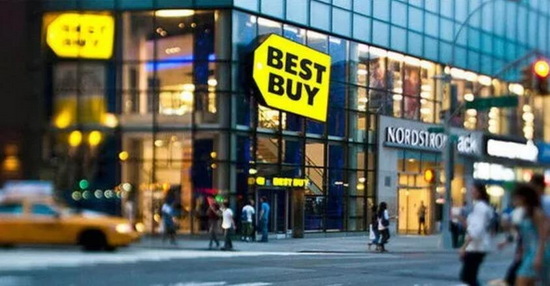
Best Buy and strategy communication
What do the companies Best Buy, Blockbuster, RadioShack and Circuit City all have in common? They were all rocked by aggressive online enterprises that destroyed their business models. Of these four companies only one survives and is thriving today – Best Buy. This is the story about how they did it and why it’s important to you when you develop and execute your next strategy...
Back in 2012 Best Buy was hemorrhaging. The story was all too familiar. Online retailers were offering the same product for less. Customers would “showroom”; they would walk in to Best Buy, check out the product and purchase the coveted item cheaper online from Amazon. With Radio Shack, Blockbuster and Circuit City as analogues it didn’t take a high IQ to predict what was in store for Best Buy.
When Hubert Joly signed on as the new CEO in 2012 his turnaround strategy was pretty straight forward. First, he needed to match Amazon prices and second, end the practice of “show- rooming” by turning it to his advantage and letting people have what they wanted right now! For Joly, getting the strategy right was the easy part but convincing thousands of employees across North America to change gears from being a predatory, commission based salesforce to “a customer centric” staff would be another thing. Joly took to the road and visited Best Buy Stores actively engaging employees and showing them what the “new” Best Buy would be like. Additionally, to show his commitment to his team he fixed three things internally that were bugging employees. He restored employee discounts, fixed an unreliable online search engine that gave bad stock-out data and he invested heavily in employee training.
Well, it would easy to think the moral of story is to develop a good strategy, visit a few store sites and presto we all live happily ever after. Right? It didn’t work that way for Blockbuster, Circuit City and Radio Shack, the CEOs of which also had good turnaround strategies. But things didn’t turn around for them. Just like the captain of the titanic, those CEO’s cranked hard on the strategy wheel to turn the ship but they failed to engage their employees so they still ended up crashing into the bankruptcy iceberg.
Joly’s strategy of price matching Amazon and turning “show rooming” into an advantage was brilliant but it was by far the easy part. Getting employees to execute is where the magic takes place as well as where most strategies fall apart and the captain of this ship was aware he would need to engage his crew with more than just a few PPT presentations. Best Buy was long known for their pushy “everyone for himself” sales commission model and it needed to be replaced with a customer centric model. To visualize this think “pushy, used car sales person" vs an Apple store experience and you’ll understand the difference. Joly didn’t bother with long presentations pleading for people to change; he went out on the floor, demonstrated what the “new”, customer centric Best Buy looked like and he implemented employee training that engaged employees in the strategy communication process.
Joly knew it was imperative to captivate the rank and file to save Best Buy. The more that he could compel employees to participate in communicating the new strategy the more deeply the ideas took hold, manifesting themselves company-wide in a new customer centric employee behavior. What we can learn from Hubert Joly and Best Buy:
1. There is no substitute for good strategy. Joly knew he had to price match Amazon but he also knew people like to actually see what they are buying and have it immediately.
2. Developing the strategy is only half the battle. Selling the new strategy deep into the company culture is mission critical.
Engage with your team and let them be part of the strategy development and then they’ll be a big part of the implementation; this is the most fumbled part of strategy. Joly engaged employees by visiting his stores in person, providing training programs and fixing broken systems. What are you doing to ensure your next strategy gets executed?

 沪公网安备 31011502013770号
沪公网安备 31011502013770号